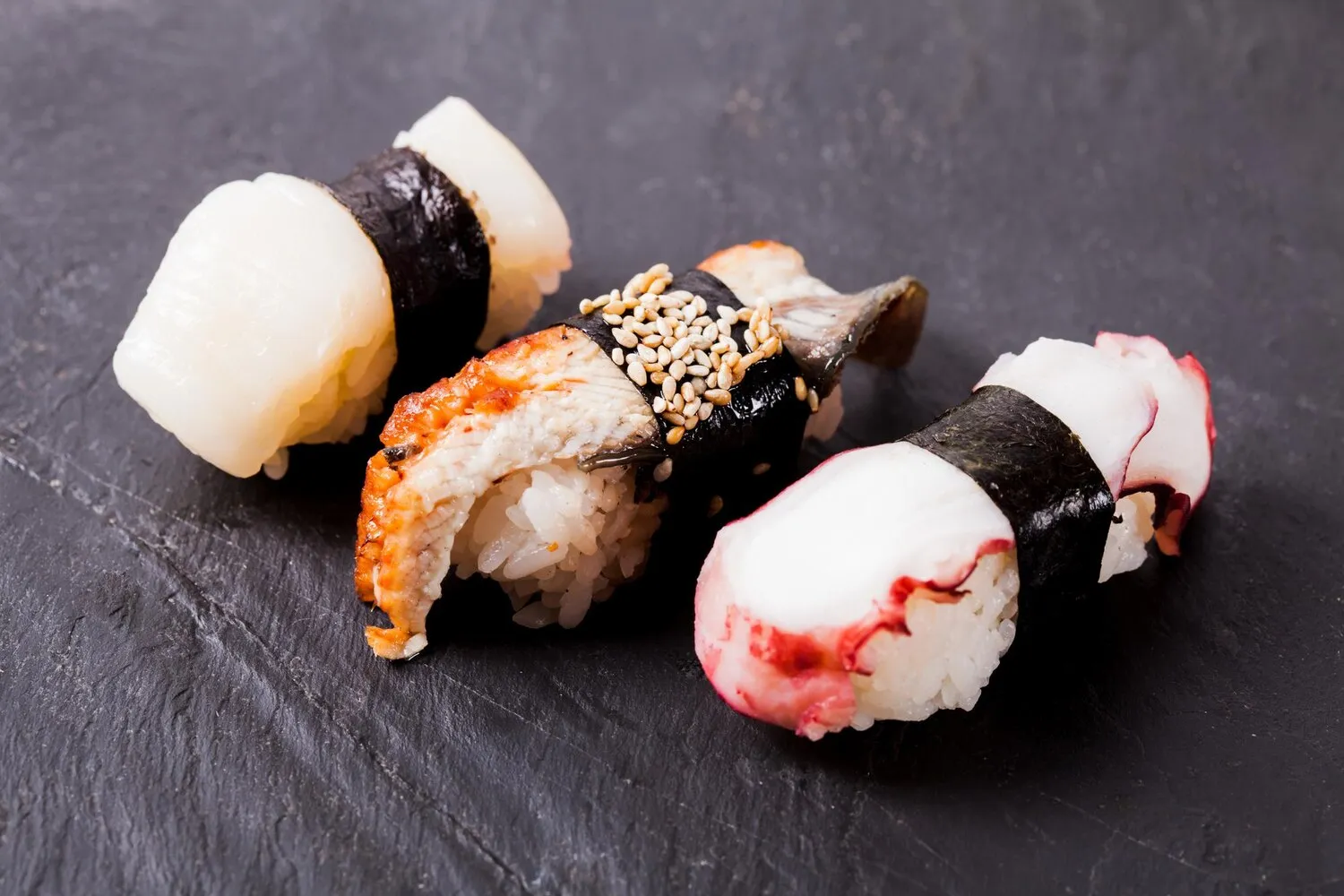
Nigiri
Nigiri is a type of sushi consisting of a slice of raw fish or other seafood pressed onto a mound of vinegared rice.
Nutrition Facts
* The % Daily Value (DV) tells you how much a nutrient in a serving of food contributes to a daily diet. 2,000 calories a day is used for general nutrition advice.
Koko Sushi Restaurant
Sushi, including nigiri, evolved from a method of preserving fish in fermented rice. This practice originated in Southeast Asia and spread to Japan, where it gradually transformed from a preservation technique to a culinary art form. Early forms of sushi involved fermenting fish with rice for extended periods before consumption. Over time, vinegar was introduced to shorten the fermentation process and enhance flavor, ultimately leading to the development of modern sushi, including nigiri.
Nigiri sushi is deeply embedded in Japanese culture, representing not only a culinary delight but also a symbol of precision, artistry, and respect for ingredients. It's often enjoyed on special occasions and within a specific etiquette framework.
Omakase
Omakase, meaning 'I'll leave it to you,' is a dining style where the chef selects and prepares the nigiri for the diner. It's a sign of trust and allows the chef to showcase their expertise and the freshest seasonal ingredients.
Sushi Etiquette
There are specific etiquette guidelines for eating nigiri, such as using chopsticks or fingers to pick it up, dipping only the fish (not the rice) in soy sauce, and eating it in one or two bites to appreciate the flavor combination.
Seasonal Ingredients
The seasonality of fish is paramount in nigiri. Chefs meticulously select the best fish available depending on the time of year, ensuring optimal flavor and texture.
Nigiri offers a delicate balance of flavors and textures. The freshness of the fish contrasts beautifully with the subtly sweet and tangy vinegared rice. Additional flavors often come from soy sauce, wasabi, and pickled ginger, each enhancing the experience in its own way.
The primary flavors in nigiri are umami from the fish, subtle sweetness and acidity from the vinegared rice (shari), and potential additions like the pungent heat of wasabi and the salty, savory notes of soy sauce. Fish selection drastically impacts the overall flavor profile, ranging from the rich, oily flavor of tuna (maguro) and salmon (sake) to the clean, delicate taste of white fish like sea bream (tai) or flounder (hirame). The rice itself is crucial, needing to be cooked perfectly and seasoned correctly with rice vinegar, sugar, and salt to achieve the desired texture and flavor.
Rice Temperature
The rice should be served at body temperature, as this allows the subtle flavors of the vinegar and rice to be fully appreciated.
Soy Sauce Usage
Use soy sauce sparingly, as the chef has already seasoned the fish and rice to perfection. Too much soy sauce can overwhelm the delicate flavors.
Wasabi Placement
The wasabi is often placed between the fish and the rice by the chef. This is the ideal amount to complement the fish. Adding extra wasabi may disrupt the balance of flavors.
Freshness is Key
The freshness of the fish is paramount. Look for bright, clear colors and a firm texture.
Explore additional Sushi dishes and restaurants
Explore SushiDiscover top dining spots and culinary experiences in Sassari.
Explore SassariLearn more about the food culture, restaurant scene, and culinary heritage of Italy.
Explore Italy